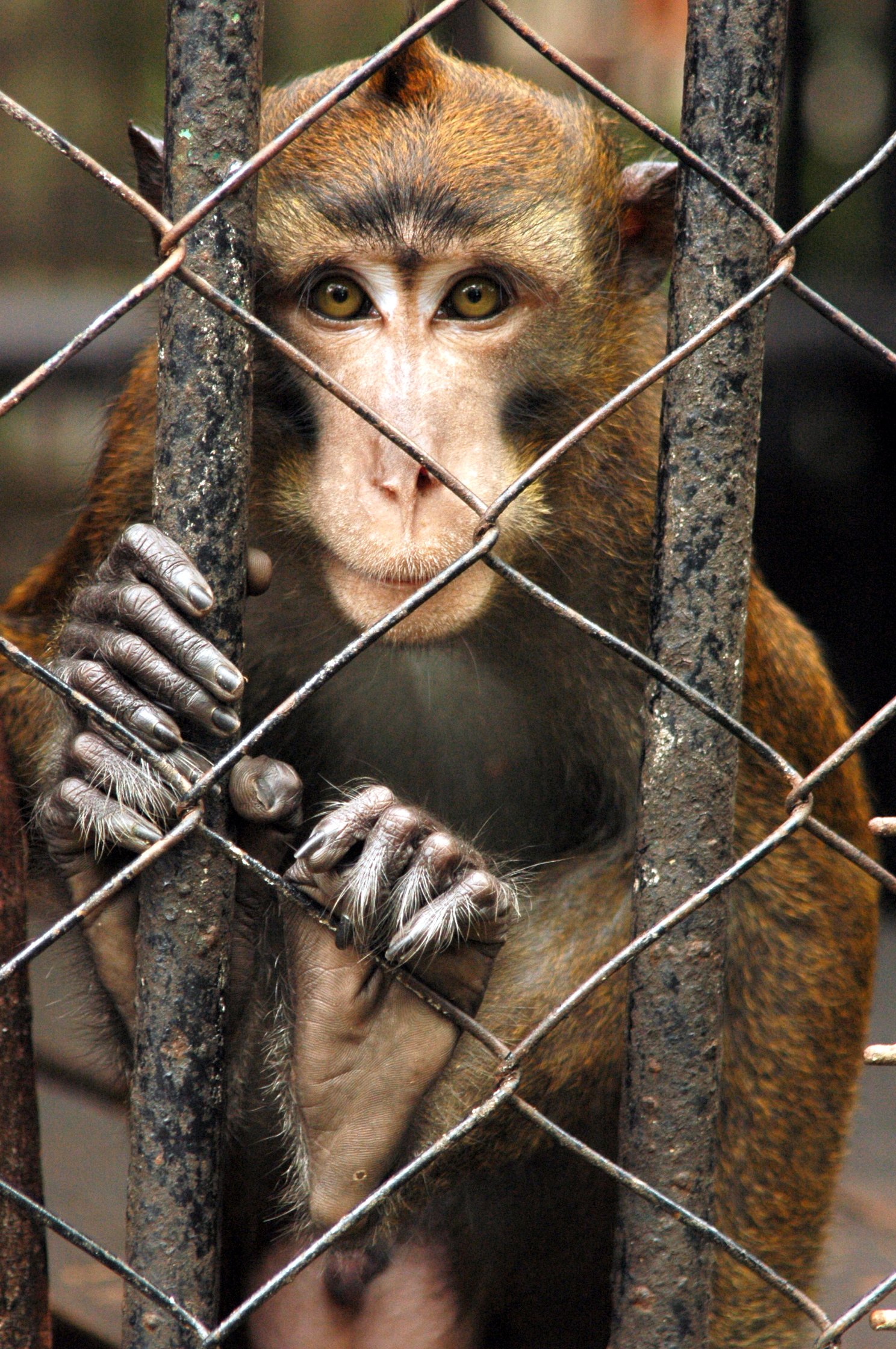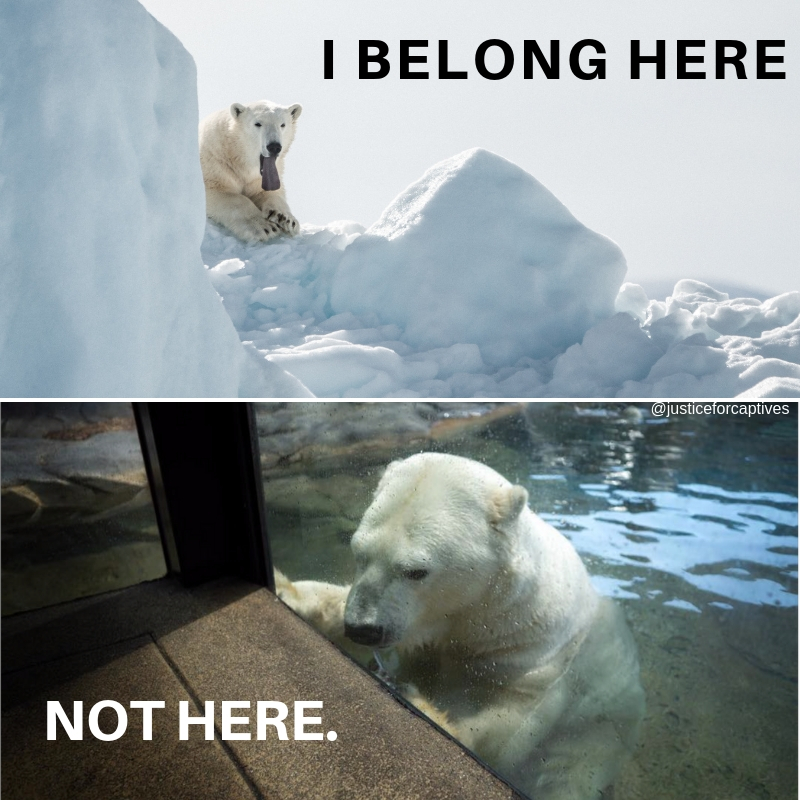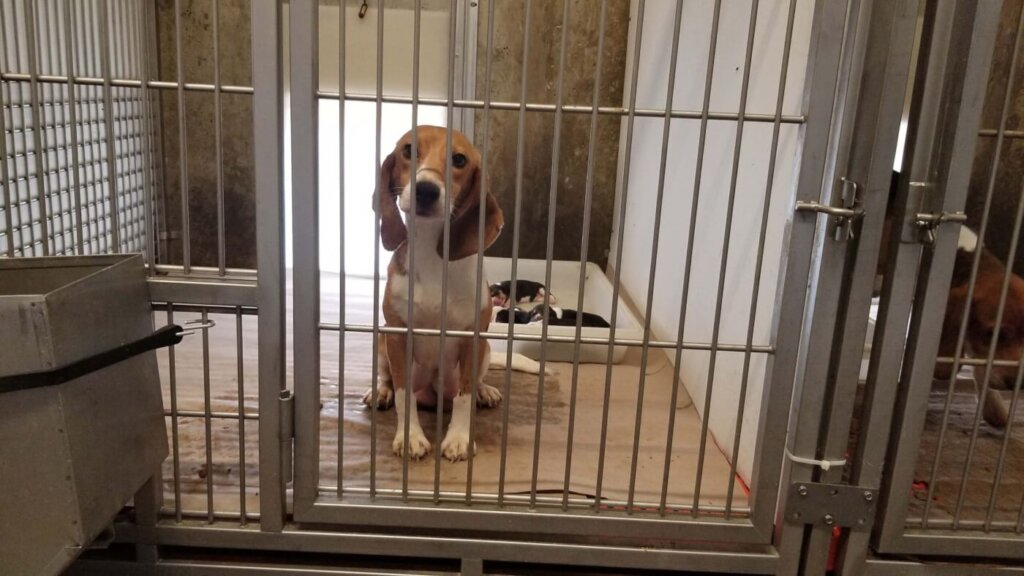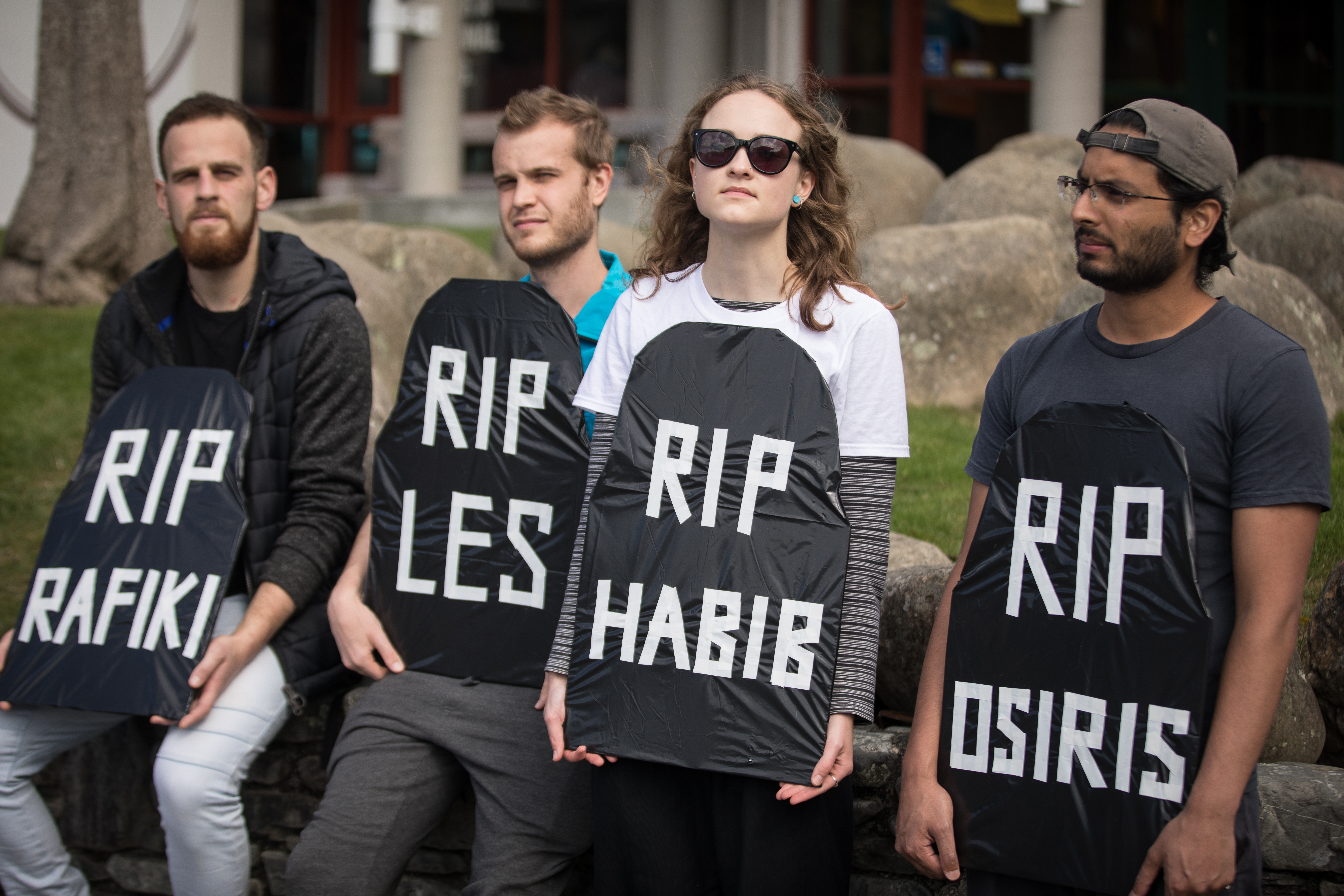
Animals in Zoos: Condemned to a Life Behind Bars
Imagine not being able to control a single aspect of your life – when you eat, what you eat, when you sleep, where you go, or even which individual you start a family with. That’s the reality for animals in zoos, who are turned into living exhibits. Some are kept in enclosures far too small for them, while others are forced to perform degrading tricks.
Even in the best zoos, under the best conditions, a lifetime of captivity is no life at all for wild animals.
An Unnatural Prison
In the wild, animals may roam for hundreds of kilometres, find their own food, raise their offspring, explore, play, and enjoy complex social relationships. Yet in zoos, their lives are restricted within four walls. The confinement and lack of stimulation they’re forced to endure often result in abnormal and self-destructive behaviour patterns – a condition known as “zoochosis” – for example, pacing, walking in tight circles, rocking, swaying, chewing on the enclosures, or mutilating themselves. Zookeepers sometimes give the animals anti-depressants, tranquilisers, or anti-psychotic drugs to try to conceal their distress.
There are also instances of shameful neglect at some zoos: animals are kept in barren, dirty enclosures with stagnant drinking water, and the facilities make no attempt to replicate their native habitat. It’s perhaps unsurprising, then, that there have been numerous instances of frustrated animals trying to escape, sometimes with tragic consequences.
In 2012, a tiger escaped from his enclosure in the Cologne Zoo and killed a zookeeper before being shot dead, while in the Czech Republic, another tiger escaped and mauled three zoo employees. Orangutans, a chimpanzee, and Asian bearcatsare just some of the animals who’ve recently tried to escape from Australian zoos, showing how desperate these unhappy animals are to regain their freedom.

The Conservation Con
Zoos would have you believe that they are all that stand between many of the species they house and extinction, but animals are almost never released from Australian zoos – and those who are rarely fare well, since being reared in captivity leaves them ill-prepared to cope with life in the wild.
Zoos know that nothing gets paying customers through their gates faster than cute baby animals. But breeding programmes – which often operate under the misleading cover of “species preservation” – inevitably result in a surplus of adult animals, who are less crowd-pleasing. So zoos routinely trade, lend, sell, barter, and warehouse adult animals they no longer want.
There’s also strong evidence that many zoos “dispose” of “surplus” animals, either by killing them or selling them to unethical exotic-animal dealers. In 2009, it was discovered that Dubbo’s Taronga Western Plains Zoo had sold 24 endangered blackbuck antelopes to a member of the Shooters, Fishers and Farmers Partyfor as little as $160 per animal so that he could breed and use them for trophy hunting on a private game reserve. The zoo stated that the animals were “not required” in its collection.
In 2019, Wellington Zoo killed four baboons– Habib, Osiris, Les, and Rafiki – and the facility’s chief executive explained that the exhibit had become “untenable” for the primates.
The only effective and sustainable way to help endangered species is to protect their natural habitat, but the massive breeding programmes of zoos divert money away from genuine conservation projects. After all, what’s the point of breeding animals if they have no home left to go to?
Teaching the Wrong Lessons
Despite their claims, zoos are hardly educational – the caged, lonely animals they house are so far removed from their natural context that they have little opportunity to follow their instincts. The only thing to be learned at these sad facilities is how animals who want to be free act when they’re confined.
At the end of the day, zoos are businesses geared towards entertainment, not educational establishments. All they teach people is that it’s acceptable to interfere with animals and keep them locked up in captivity, where they’re frustrated, cramped, lonely, and deprived of all control over their lives.
What You Can Do
Australian laws and codes provide animals in captivitywith barely any protection. Zoos will only stop breeding and capturing more animals from the wild if their financial support disappears, so the most important way to save animals from imprisonment is simply to stay away from facilities that keep wild animals in captivity. We can protect endangered species by supporting habitat conservation, not animal prisons.
Animals Used for Entertainment:
Zoos | Rodeos | Horse Racing | Jumps Racing | Fishing
Animals Are Suffering in Laboratories – Help Save Them Now



